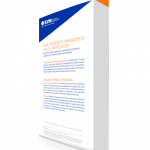The following was adapted from a lunch & learn presentation at Sperry Van Ness | RICORE Investment Management, Inc in Cincinnati, Ohio. This is part two in a four-part series.
Demystifying the Commercial Lease: Part Two
A typical commercial lease is a comprehensive document that may be anywhere from 20 to 60 pages long. (Often with exhibits these things can be huge! So, reviewing new leases can be a real headache for an agent trying to sell or property manager taking on the management of a new multi-tenant property or shopping center.) When paging through a lease many provisions can seem irrelevant, extraneous, unimportant or rarely used. The fact is that every lease provision is drafted to address a specific event, need or situation that a landlord or tenant may face. Today, I was asked to address some of the more ‘legalistic’ provisions in the commercial lease in an attempt to try to ‘demystify’ them for you.
To read part one of this series on Subordination, Non-Disturbance and Attornment Agreements and ‘SNDA Agreements’, please visit here.
II. Tenant Estoppel Certificates
Estoppel: A legal bar to alleging or denying a fact because of one’s own previous actions or words to the contrary. Merriam-Webster Dictionary online.
An estoppel certificate is a document designed to give a third party critical information on the relationship between the landlord and a tenant. The third party is frequently a prospective purchaser of the landlord’s real property containing the tenant’s premises, or a lender who will be secured by an interest in that property. Typically the deal that the landlord is making requires the landlord to obtain such certificates from its tenants and present them to the third party for use in its “due diligence” review of the property. Estoppel certificates are a significant issue in a sale or refinancing because they provide independent verification to the buyer or lender of the cash flow from the tenant’s rent payments. They also help the buyer or lender identify any lease defaults or disputes with tenants that could cause a problem after closing.
Most commercial or retail leases have provisions which require the tenant to prepare and sign estoppel certificates (or estoppel letters as they are sometimes called) upon the landlord’s request. To avoid disputes about the content of the estoppel certificate, a good practice is to attach the actual form of estoppel certificate as an exhibit to the lease. Typically the tenant is required to certify that as of the date of the document certain things are true, or to specify in some detail why they are not true. Topics usually covered include:
(i) the date of lease commencement, the dates of the current term and any options to renew;
(ii) the amount of current rent and the date through which rent has been paid;
(iii) whether the tenant’s lease is in full force and effect and has not been assigned, modified, supplemented or amended;
(iv) whether all conditions under the lease to be performed by the landlord have been satisfied;
(v) whether any required contributions by the landlord to the tenant on account of the tenant’s improvements have been received by the tenant;
(vi) whether there are any existing defaults by either party or claims, defenses or offsets which the tenant has against the enforcement of the lease by the landlord;
(vii) whether any rent or related payment obligation has been paid more than one month in advance; and
(viii) whether any security has been deposited with the landlord.
The tenant is usually required to state that its disclosures in the estoppel certificate may be relied upon by the specified third party or parties. The tenant’s knowledge that the landlord, purchaser and/or lender are relying on the estoppel certificate means that the tenant could be held liable to the third party if the certificate contains untrue statements. By signing the estoppel certificate, the tenant “estops,” or prohibits, itself from taking a position contrary to what it stated in the certificate. The danger in certifying to something that is not accurate is that the tenant may be giving up the right to contest it at a later time. For example, a tenant who signs an estoppel certificate stating that there are no landlord defaults may have a difficult time later if it comes to light that there was a landlord default, even if it was unknown to the tenant at the time, during the period covered by the estoppel certificate. One way that tenants try to lessen the possible harmful effect of an inaccurate estoppel certificate is to qualify the statements “to tenant’s actual knowledge” or “to the best of tenant’s knowledge.” Leases usually require the tenant to prepare and sign the certificate within a relatively short period, and authorize the landlord to prepare and sign the certificate in the tenant’s name if the tenant does not respond within the allowed time. Further, failure to timely provide the estoppel often constitutes a default by the tenant under the lease.
Note: There can be estoppel certificates of various types, including landlord estoppel certificates.
To read more on property management, click here.
